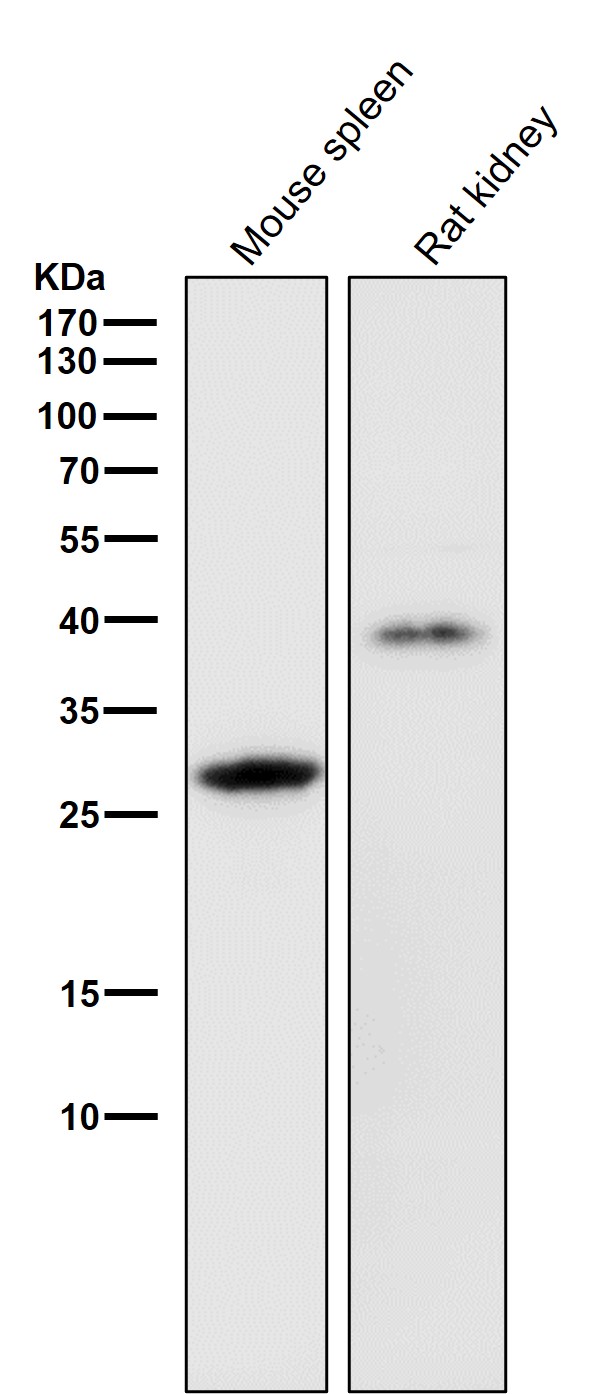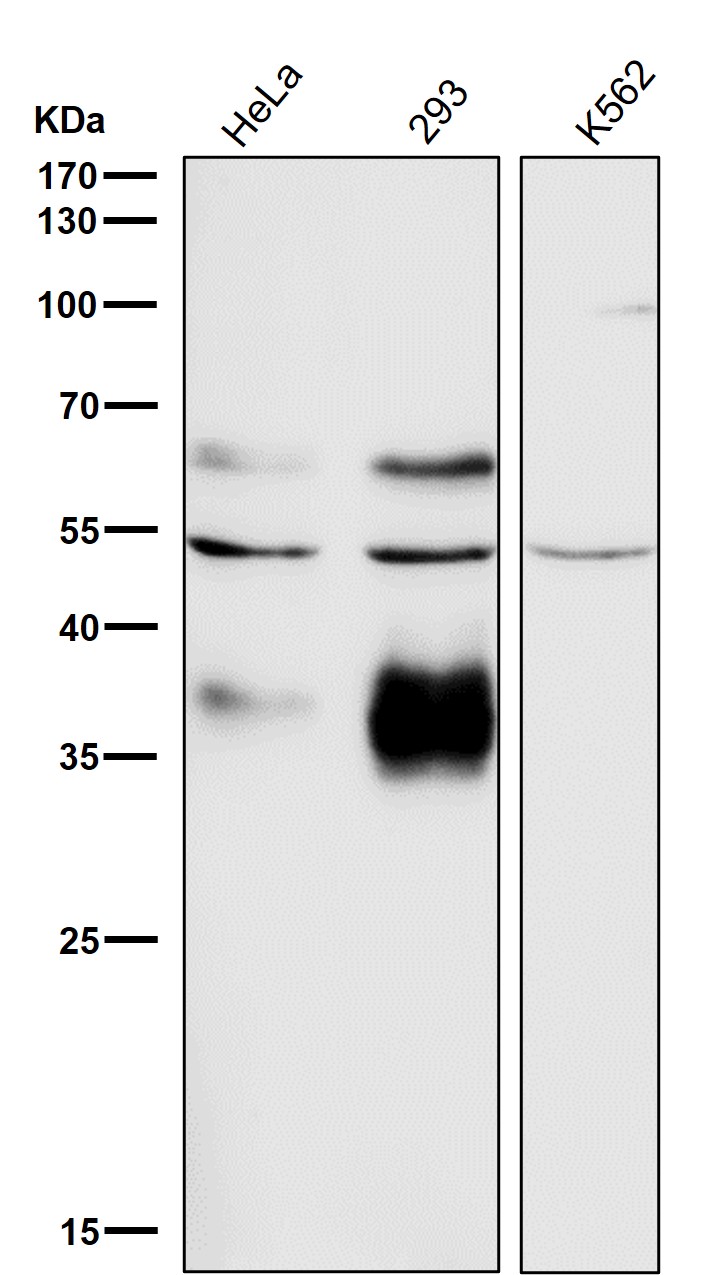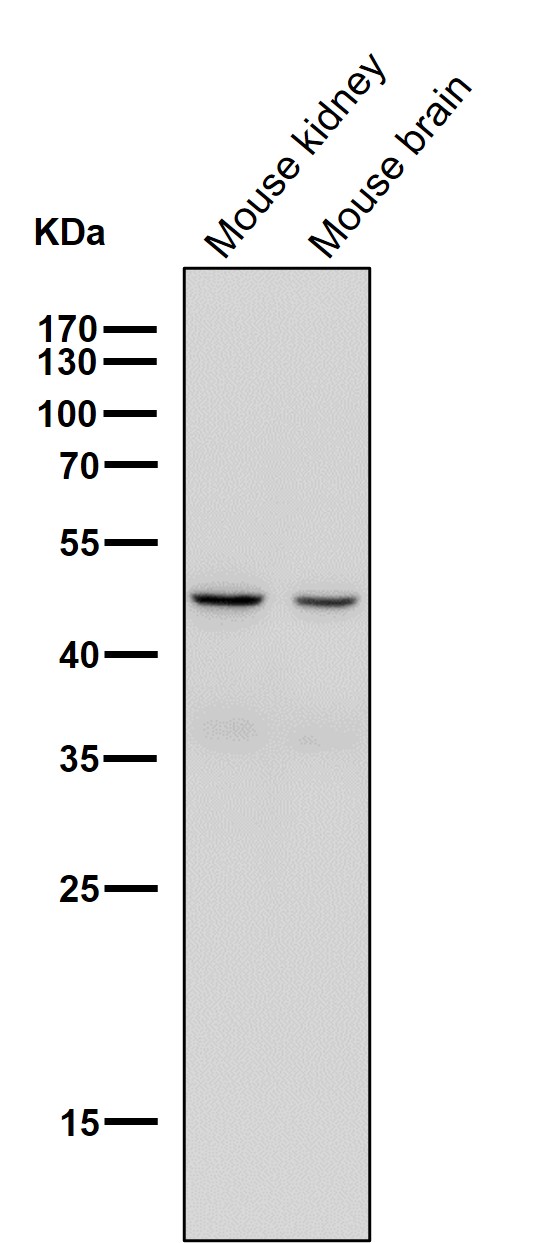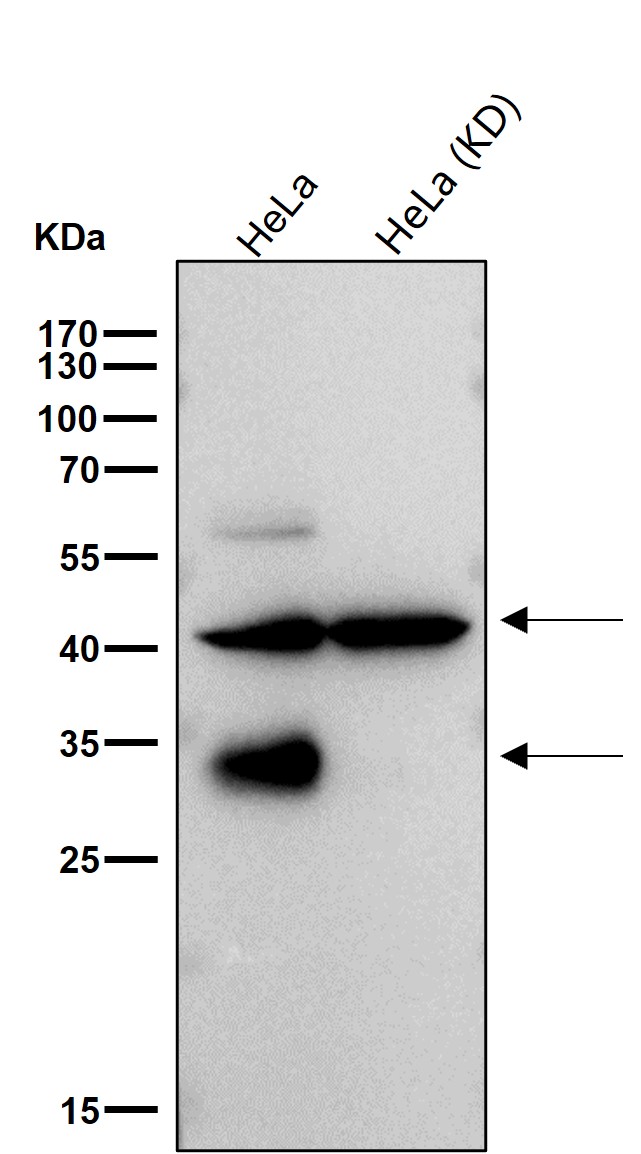



| WB | 咨询技术 | Human,Mouse,Rat |
| IF | 咨询技术 | Human,Mouse,Rat |
| IHC | 咨询技术 | Human,Mouse,Rat |
| ICC | 技术咨询 | Human,Mouse,Rat |
| FCM | 咨询技术 | Human,Mouse,Rat |
| Elisa | 咨询技术 | Human,Mouse,Rat |
| Aliases | AEP; cysteine 1; Legumain; LGMN; LGMN1; PRSC1;;Legumain |
| WB Predicted band size | Calculated MW: 49 kDa ; Observed MW: 36,57 kDa |
| Host/Isotype | Rabbit IgG |
| Antibody Type | Primary antibody |
| Storage | Store at 4°C short term. Aliquot and store at -20°C long term. Avoid freeze/thaw cycles. |
| Species Reactivity | Human,Mouse,Rat |
| Immunogen | A synthesized peptide derived from human Legumain |
| Formulation | Purified antibody in PBS with 0.05% sodium azide,0.05% BSA and 50% glycerol. |
+ +
以下是3篇关于Legumain抗体的代表性文献及简要摘要:
---
1. **标题**: *Legumain protease-activated Tspan1 nanoparticles for dual-targeting TAMs and cancer therapy*
**作者**: Liu Y et al. (2023)
**摘要**: 开发了一种基于Legumain抗体修饰的纳米颗粒,靶向肿瘤相关巨噬细胞(TAMs)和癌细胞中的Legumain高表达,实现精准药物递送和抗肿瘤效果验证。
---
2. **标题**: *Legumain as a biomarker for early detection of colorectal cancer*
**作者**: Chen X et al. (2021)
**摘要**: 研究证实Legumain在结直肠癌组织中显著高表达,通过特异性抗体检测血清/组织样本中的Legumain水平,可作为早期诊断的潜在标志物。
---
3. **标题**: *Legumain regulates inflammatory response via NF-κB pathway in macrophages*
**作者**: Wang L et al. (2020)
**摘要**: 利用Legumain中和抗体阻断其活性,发现Legumain通过调控NF-κB通路影响巨噬细胞的炎症因子释放,为炎症性疾病治疗提供新靶点。
---
**备注**:以上文献为示例,实际引用时建议通过PubMed或Web of Science核实具体信息。若需全文链接或补充方向,可进一步说明。
Legumain, also known as asparaginyl endopeptidase (AEP) or LGMN, is a cysteine protease that primarily localizes to lysosomes and endosomes. It plays a critical role in protein processing, including the cleavage of substrates at asparagine or aspartic acid residues. Initially studied for its involvement in antigen processing for MHC class II presentation, legumain has gained attention for its diverse roles in pathological conditions such as cancer, neurodegenerative diseases, and inflammation. In cancer, legumain is often overexpressed in tumor tissues and the tumor microenvironment, contributing to extracellular matrix remodeling, invasion, and metastasis. Its dysregulation is also linked to Alzheimer’s disease, where it may process amyloid precursor proteins.
Legumain-specific antibodies are essential tools for studying its expression, localization, and function. These antibodies enable detection via techniques like Western blotting, immunohistochemistry, and flow cytometry. Monoclonal antibodies, known for high specificity, are widely used to target distinct epitopes, while polyclonal antibodies may offer broader detection across species. Research applications include exploring legumain’s role as a biomarker for disease progression or as a therapeutic target. Recent studies also investigate legumain-activated prodrugs, highlighting its potential in targeted cancer therapies. Validating antibody specificity remains crucial due to structural similarities among cysteine proteases. Overall, legumain antibodies are pivotal in advancing understanding of its biological and pathological significance. (298 words)
×